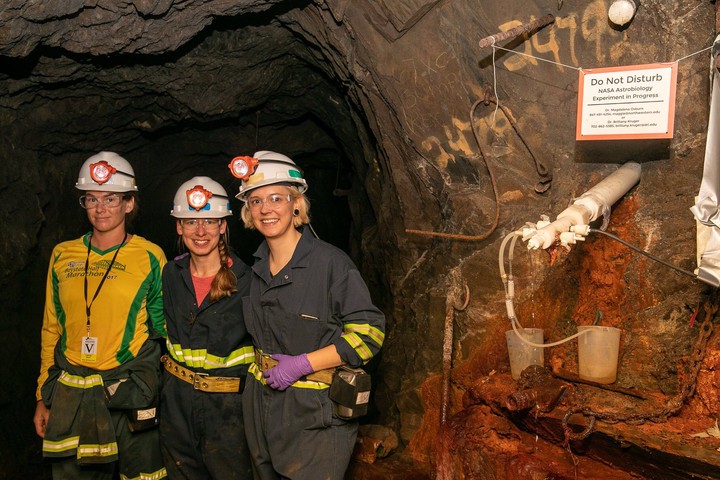Mineral‐hosted biofilm communities in the continental deep subsurface, Deep Mine Microbial Observatory, SD, USA
 Image credit: Matt Kapust
Image credit: Matt Kapust
Abstract
Deep subsurface biofilms are estimated to host the majority of prokaryotic life on Earth, yet fundamental aspects of their ecology remain unknown. An inherent difficulty in studying subsurface biofilms is that of sample acquisition. While samples from marine and terrestrial deep subsurface fluids have revealed abundant and diverse microbial life, limited work has described the corresponding biofilms on rock fracture and pore space surfaces. The recently established Deep Mine Microbial Observatory (DeMMO) is a long‐term monitoring network at which we can explore the ecological role of biofilms in fluid‐filled fractures to depths of 1.5 km. We carried out in situ cultivation experiments with single minerals representative of DeMMO host rock to explore the ecological drivers of biodiversity and biomass in biofilm communities in the continental subsurface. Coupling cell densities to thermodynamic models of putative metabolic reactions with minerals suggests a metabolic relationship between biofilms and the minerals they colonize. Our findings indicate that minerals can significantly enhance biofilm cell densities and promote selective colonization by taxa putatively capable of extracellular electron transfer. In turn, minerals can drive significant differences in biodiversity between fluid and biofilm communities. Given our findings at DeMMO, we suggest that host rock mineralogy is an important ecological driver in deep continental biospheres.
Supplementary code.